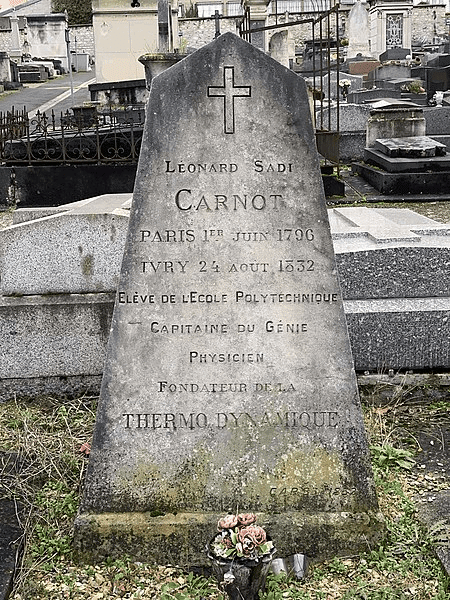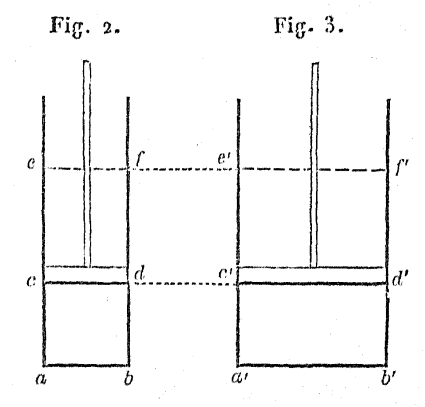
熱力学の創始者、サディ・カルノー
Nicolas Léonard Sadi Carnot,1796-1832(ニコラ・レオナール・サディ・カルノー)



論文
Réflexions sur la puissance motrice du feu et sur les machines propres à développer cette puissance (Reflections on the motive power of fire, and on machines fitted to develop that power), 1824
火の動力、および、この動力を発生させるに適した機関についての考察(1824)
カルノーサイクルの図(原論文より)




カルノーの定理
原論文より(フランス語)
On doit done conclure que le maximum de puissance motrice resultant de l'emploi de la vapeur est aussi le maximum de puissance motrice réalisable par quelque moyen que ce soit.
La puissance motrice de la chaleur est indépendante des agents mis en Quvre pour la réaliser; sa quantité est fixée uniquement par les temperatures des corps entre lesquels se fait, en dernier résultat, le transport du calorique.
英語訳
We
should
then
conclude
that
the
maximum
of
motive
power
resulting
from
the
employment
of
steam
is
also
the
maximum
of
motive
power
realizable
by
any
means
whatever.
The
motive
power
of
heat
is
independent
of
the
agents
employed
to
realize
it;
its
quantity
is
fired
solely
by
the
temperatures
of
the
bodies
between
which
is
effected,
finally,
the
transfer
of
the
caloric.
日本語訳
蒸気の利用によって生ずる動力の量の最大値はまた、任意の手段によって生み出される動力の量の最大値でもある、と結論しなければならない。
熱の動力は、それをとりだすために使われる作業物質によらない。その量は、熱素が最終的に移行しあう二つの物質の温度だけできまる。
【おまけ、いい加減な単語集(作成中)】
puissance:力
motrice:モーター、動力
chaleur:熱
indépendante:独立
agent:エージェント
Ouvre:開く,開ける
réaliser:成し遂げる
quantité:量
fixée:決められた,定まった
uniquement:ユニークに
temperature:温度
corps:物体
entre:~と~の間
lesquels:どれの
fait:なされた
dernier:最後の
résultat:結果
transport:運ぶ
calorique:カロリー
